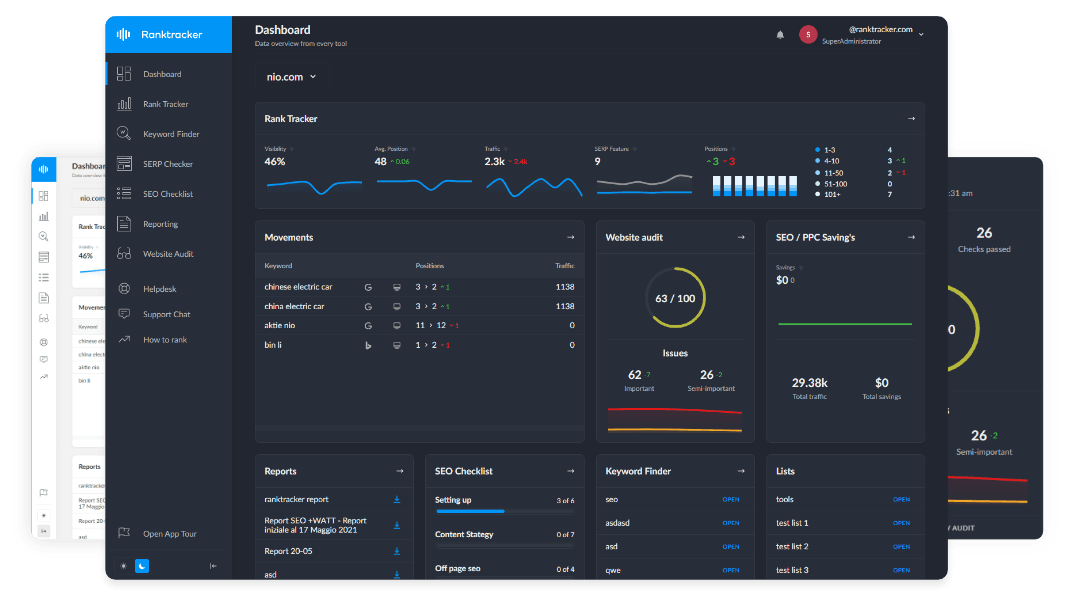Intro
Keeping up with logistics and energy demands isn’t easy. Delayed shipments, wasted fuel, and high costs can leave businesses frustrated. Many feel stuck trying to balance efficiency with growing expectations.
Here’s the good news: advanced technologies are transforming these industries. Artificial intelligence (AI), automation, and IoT are solving problems faster than ever before. For example, AI alone has improved supply chain accuracy by 30% in some cases.
This blog will explain how smart tools are making a significant difference for logistics and energy systems. Stay tuned to find out how they can benefit your business!
The Role of Artificial Intelligence in Logistics and Energy
AI makes intelligent decisions more quickly than humans ever could. It changes logistics and energy by anticipating problems before they occur.
Enhancing supply chain efficiency
Artificial intelligence enhances supply chain efficiency by accurately predicting demand. Algorithms analyze weather, trends, and customer behavior to estimate inventory needs. This prevents overstocking and minimizes waste.
For example, energy companies use sophisticated tools to monitor materials in real time during distribution. Fewer delays translate to reduced costs for businesses.
Automation in logistics accelerates order processing. Robots sort packages more quickly than humans ever could in warehouses. Automated systems also detect bottlenecks such as traffic or outdated routes in transportation technology.
"Efficiency isn't just saving time; it's about reimagining the entire process," said a logistics expert recently at an industry event.
Optimizing energy consumption through predictive analytics
Efficiency in the supply chain often reflects how companies manage energy. Predictive analytics detects patterns in energy use, helping businesses reduce waste and save money. For example, intelligent systems can analyze peak usage times and recommend changes to lower demand during high-cost periods.
The All-in-One Platform for Effective SEO
Behind every successful business is a strong SEO campaign. But with countless optimization tools and techniques out there to choose from, it can be hard to know where to start. Well, fear no more, cause I've got just the thing to help. Presenting the Ranktracker all-in-one platform for effective SEO
We have finally opened registration to Ranktracker absolutely free!
Create a free accountOr Sign in using your credentials
Predictive models anticipate future consumption based on historical data, weather trends, or operational schedules. According to the U.S. Department of Energy, predictive analytics in energy systems helps reduce maintenance costs, improve safety, and enhance overall reliability. This enables businesses to adjust production plans or shift loads effectively.
Such insights support better decisions while cutting costs and dependence on non-renewable resources.
Robotics and Automation Revolutionizing Operations
Machines now manage many repetitive tasks, allowing human workers to focus on more intricate roles. Robots don’t require coffee breaks, but they certainly make processes faster!
Autonomous systems in warehousing and transportation
Autonomous vehicles are changing transportation and logistics. Self-driving trucks now manage freight, cutting delivery times and fuel costs. Warehouse automation depends on robots to sort, pick, and pack inventory with precision.
These systems increase accuracy and reduce human errors.
Drones deliver packages faster in last-mile logistics. Autonomous forklifts transport goods through warehouses without delays. Businesses, including logistics providers like ShipExpert in Canada, are seeing reduced operational costs and improved delivery times.
Automation also adapts smoothly as demand shifts in supply chains.
Automation reducing operational costs
Businesses save money by automating repetitive tasks like inventory management and order processing. Machines handle these jobs faster than humans, cutting down labor costs and mistakes.
In warehouses, automated picking systems reduce errors and increase productivity. Self-driving trucks lower fuel consumption by following optimal routes. These changes cut waste and improve bottom lines for companies big and small.
IoT-Driven Innovations
Smart devices now link every point in logistics and energy systems. They exchange data faster than gossip spreads in a small town.
Real-time tracking and monitoring in logistics
GPS and IoT sensors now monitor shipments every step of the way. Businesses are aware of the precise location of their goods, whether in a warehouse or on the road.
The All-in-One Platform for Effective SEO
Behind every successful business is a strong SEO campaign. But with countless optimization tools and techniques out there to choose from, it can be hard to know where to start. Well, fear no more, cause I've got just the thing to help. Presenting the Ranktracker all-in-one platform for effective SEO
We have finally opened registration to Ranktracker absolutely free!
Create a free accountOr Sign in using your credentials
Fleet management technology offers real-time updates on delivery progress. Drivers can modify routes based on traffic data, saving time and cutting costs.
IoT applications in smart energy grids
Smart energy grids use IoT sensors to track electricity demand in real time. These devices collect data on usage patterns, helping businesses avoid overuse during peak hours. Energy providers use this information to balance supply and demand efficiently, cutting waste.
IoT systems also detect equipment failures before they cause major outages. Smart meters provide accurate billing and reduce manual errors. According to 60Hertz Energy, these IoT innovations help businesses save costs while improving system reliability and efficiency.
Next, explore how advanced technologies shape the future.
Emerging Deep Technologies Shaping the Future
Businesses now use smarter tools to predict demand and protect data. These advancements bring clarity and trust to complex operations.
Machine learning for demand forecasting
Retailers and manufacturers use machine learning to anticipate customer needs. Algorithms analyze historical sales data, seasonal trends, and market behavior. These insights enable businesses to stock the appropriate products in the correct quantities at the right time.
This minimizes overstocking and prevents lost sales due to empty shelves.
Energy companies apply demand forecasting to manage resources effectively. Machine learning models assist in estimating energy consumption patterns during peak hours or weather changes.
Accurate predictions reduce production costs and prevent energy waste while ensuring a reliable supply for consumers.
Blockchain for secure and transparent transactions
Blockchain improves transparency in transactions. Each record is stored in a digital ledger, making it nearly tamper-proof. The World Economic Forum highlights blockchain’s role in strengthening supply chain resilience by ensuring real-time visibility, data integrity, and trust between parties. This builds trust among partners across the supply chain.
The All-in-One Platform for Effective SEO
Behind every successful business is a strong SEO campaign. But with countless optimization tools and techniques out there to choose from, it can be hard to know where to start. Well, fear no more, cause I've got just the thing to help. Presenting the Ranktracker all-in-one platform for effective SEO
We have finally opened registration to Ranktracker absolutely free!
Create a free accountOr Sign in using your credentials
Businesses can monitor shipments or payments instantly without relying on intermediaries.
Energy systems use blockchain to handle peer-to-peer energy trading. It allows precise tracking of renewable energy production and usage. Operators gain improved insights while reducing unnecessary costs.
Automation in logistics benefits from this reliability, advancing efficiency with IoT-driven developments.
Conclusion
Advanced technologies are reshaping logistics and energy systems. They enhance efficiency, reduce costs, and enable smarter decisions. From predictive analytics to automation, the influence is clear.
Businesses that adopt these tools will maintain a competitive edge. Change isn’t approaching—it has already arrived.

